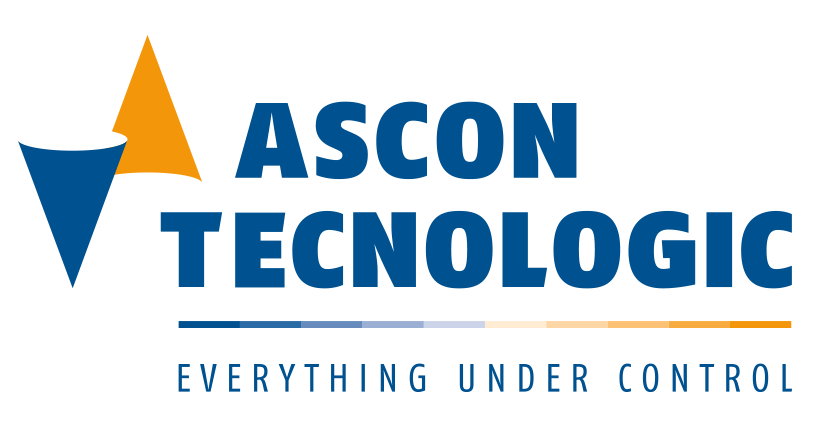Safety and approvals
The applicable rules, according to the model, are:
Safety
– EN61010-1
– EN60730-1
– UL873 for use conforming as foreseen by Underwriters Laboratory Inc. (only for approved instruments).
EMC
– EN61326-1
Remarks: please make reference to the documentation and the individual certifications for details of the applicable norms.
Warnings
– The instrument must be connected to the correct supply voltage by carefully following the instructions given in the user manual.
– The connections must be made using cables of adequate rating and isolation and in compliance with the rules. The cables from the input sensors must be separated from the power supply or from power devices.
– The instrument is not equipped with a circuit breaker or fuse protection. The installation must therefore include a two-phase disconnecting switch located as close as possible to the device in a place easily accessible to the user and marked as the instrument disconnecting device. To protect the instrument and the relay contacts special protection fuses must be provided.
– To use the instrument in equipment which is expected to Class 1 installation, all accessible conductive parts must be connected to protective earth.Spikes present on the power line should not exceed 2.5 kV. Otherwise must be provided protections to limit the spike values to 2.5 kV.
– The instrument must be installed inside a container to prevent accidental contact of parts under dangerous voltage or the introduction of conductive substances or condensation. In the same container must not be placed devices that may generate excessive heat. Inside the container must be ensured an adequate ventilation to the instrument.
– The measurement input, the analog output or the SSR drive are not optically isolated from each other and from the power supply.
– The installer must ensure that EMC rules are respected, also after the installation of the instrument, if necessary using proper filters.
– The user must ensure that the parameters are correctly programmed and that the application functions correctly in order to avoid to people or property damages.
– The instrument should not be used in environments with dangerous atmosphere (flammable/explosive).
– Using the instrument for applications not expressly provided for by the rules above must adopt the appropriate protective measures.
ASCON TECNOLOGIC and its legal representatives do not assume any responsibility for any damage to people, things or animals deriving from violation, wrong or improper use or in any case not in compliance with the instrument’s features.

DISPOSAL
In reference to directive 2012/19/EU of the European Parliament and of the Council
of 4 july 2012 and the related national legislation, please note that:
a) WEEE cannot be disposed of as municipal waste and such waste must be collected and disposed of separately;
b) the public or private waste collection systems defined by local legislation must be used. In addition, the equipment can be returned to the distributor at the end of its working life when buying new equipment;
c) the equipment may contain hazardous substances: the improper use or incorrect disposal of such may have negative effects on human health and on the environment;
d) the symbol (crossed-out wheeled bin) shown on the product or on the packaging and on the instruction sheet indicates that the equipment has been introduced onto the market after 13 August 2005 and that it must be disposed of separately;
e) in the event of illegal disposal of electrical and electronic waste, the penalties are specified by local waste disposal legislation.
POLICY DECLARATION ON MATERIALS COMING FROM “CONFLICT MINERALS” AREAS
ASCON TECNOLOGIC srl supports the fight against violence, the violation of human rights and environmental degradation in the extraction and marketing of certain minerals
(cassiterite, columbite-tantalite, and wolframite from which gold, tin, tantalum and tungsten are obtained) from the African Great Lakes area defined as “Conflict Region”. The region includes the Democratic Republic of the Congo (DRC) and neighboring countries. Profits resulting from the extraction and marketing of these minerals finance armed groups and contribute to the occurrence of inhuman treatments, such as human trafficking, slavery, forced and/or child labor, torture and war crimes in the “Conflict Region”.
The U.S. The Securities and Exchange Commission (SEC) has drafted legislation regarding the requirements for the detection and publication of the “Conflict Minerals”, as indicated by the
“Dodd-Frank Wall Street Reform and Consumer Protection Act, Section 1502” of 2010.
The rules require manufacturers to communicate if their products contain “Conflict Minerals” which are necessary for the functionality or production of these products.
On 17 May 2017, Regulation (EU) 2017/821 was published, which establishes obligations regarding the duty of care in the supply chain for Union importers of tin, tantalum, tungsten and gold originating in conflict zones or high risk.
ASCON TECNOLOGIC COMMITSnot to intentionally supply materials and components containing specified metals from mines and foundries of the “Conflict Region” that are not certified as “Conflict Free” ensuring compliance with these requirements, requiring its suppliers to undertake an appropriate evaluation process with their supply chains in order to ensure that the specified metals come only from:
mines and foundries outside the “Conflict Region”, mines and foundries that have been certified by an independent third party as “Conflict Free”, if located within the “Conflict Region”.
ASCON TECNOLOGIC srl has obtained, or is about to obtain, information from its suppliers regarding the origin of the minerals used in the production of gold, tin, tantalum and tungsten, used for the manufacture of electronic components used in its production processes.
The aim is to ensure that only “Conflict Free” materials and components are used in the products and processes purchased.

